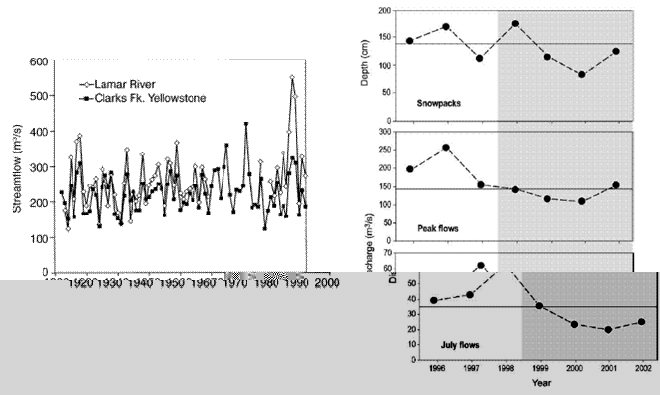

Figure Set 2: Factors influencing suppression and recrutiment of woody riparian vegetation.
FIGURE SET

Figure 2-1. (a) Time series of annual peak flows for the Lamar River and the Clarks Fork River in Yellowstone National Park, for their periods of record. For these streams, 5-year peak flow events average ~ 290 m3/s (305 m3/s for Lamar River, 275 m3/s for Clarks Fork). From Beschta (2003). (b) Annual maximum snowpack depth, annual peak flow, and July streamflow from 1996-2002 in the upper Gallatin Basin of southwestern Montana, adjacent to Yellowstone National Park. The long-term average (from the 1930's to 2002) for each variable is shown by the horizontal line. The shaded area in the figure represents a period of increasing willow height. From Ripple and Beschta (2004a).

Figure 2-2. (a) Repeat photographs for an ungulate exclosure (inside the fenced area - note fence posts are ~3 m tall) in the Gallatin River basin adjacent to Yellowstone National Park, showing the status of willows within and outside of the exclosure during 1969 (winter), 1999 (spring), and 2003 (summer). (b) Percentage of willow leaders (= new shoots) browsed by elk, and average height (error bars = standard deviation) of willow leaders outside of the grazing exclosure shown above from 1998 to 2002. From Ripple and Beschta (2004a).